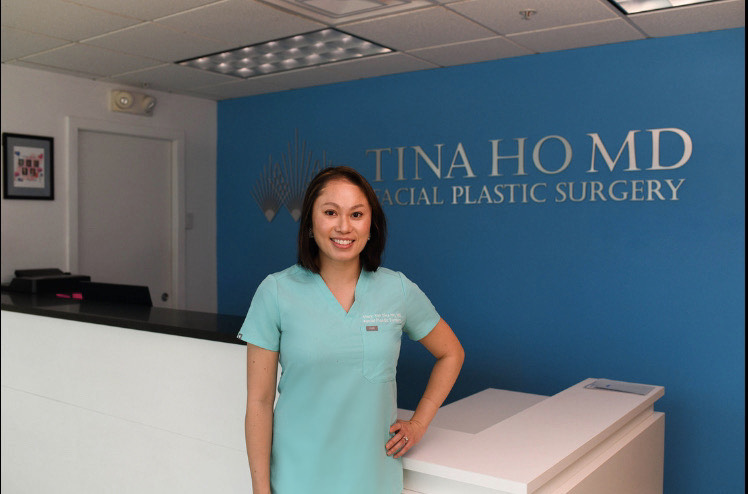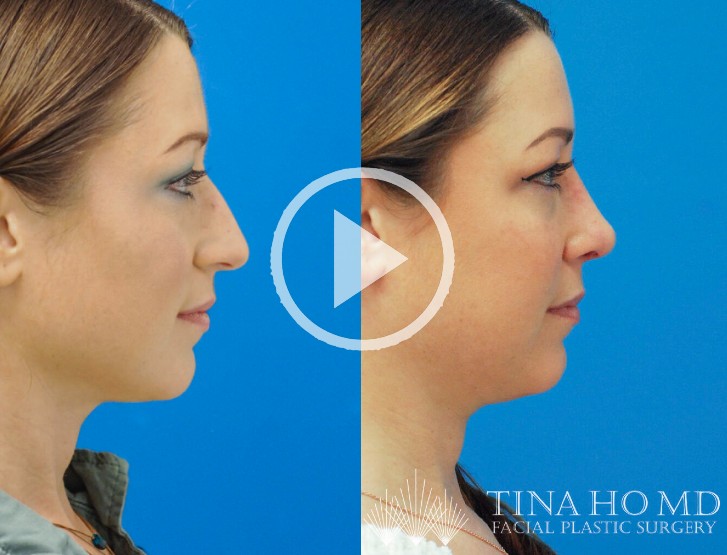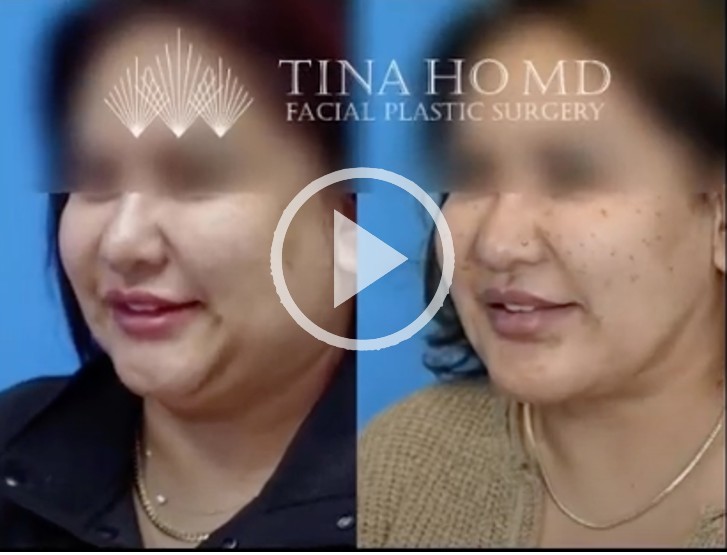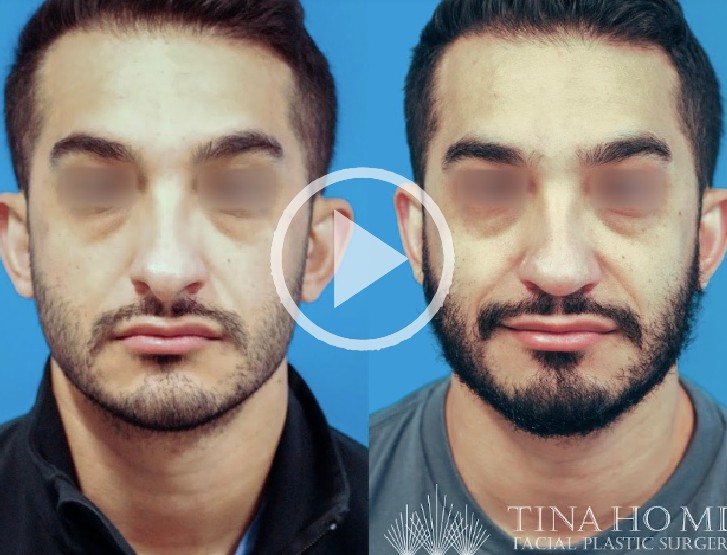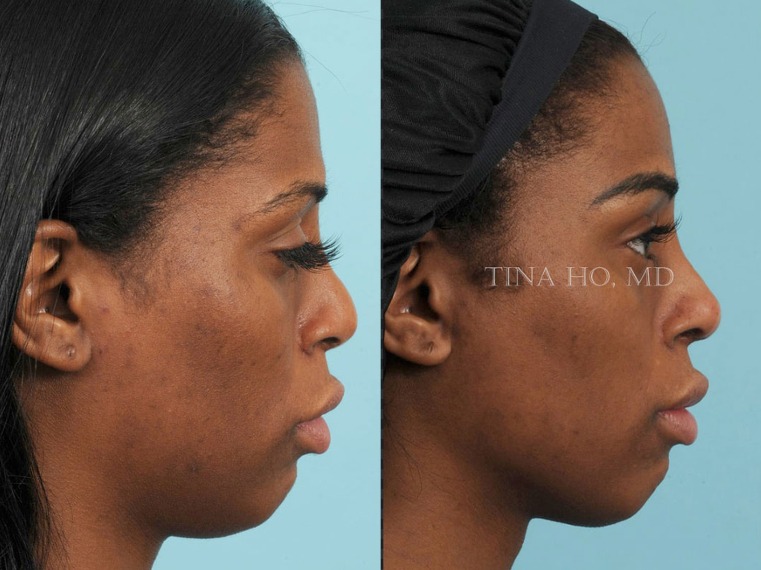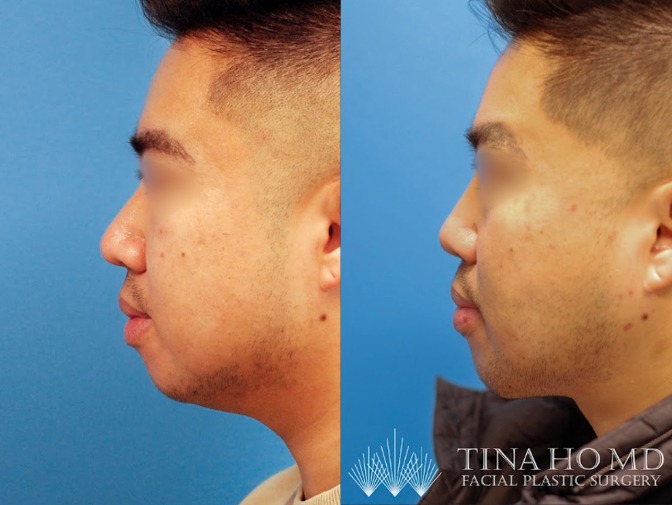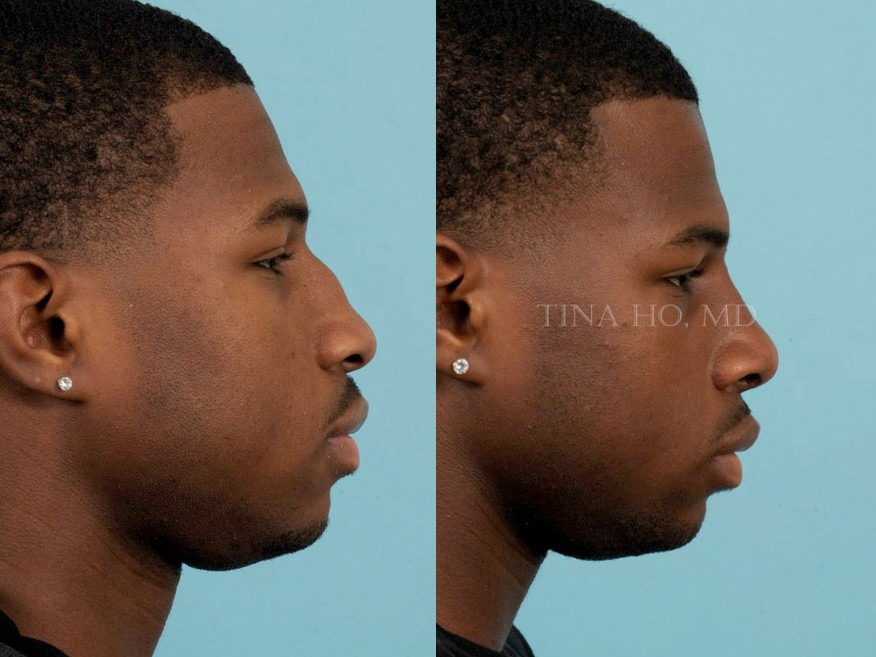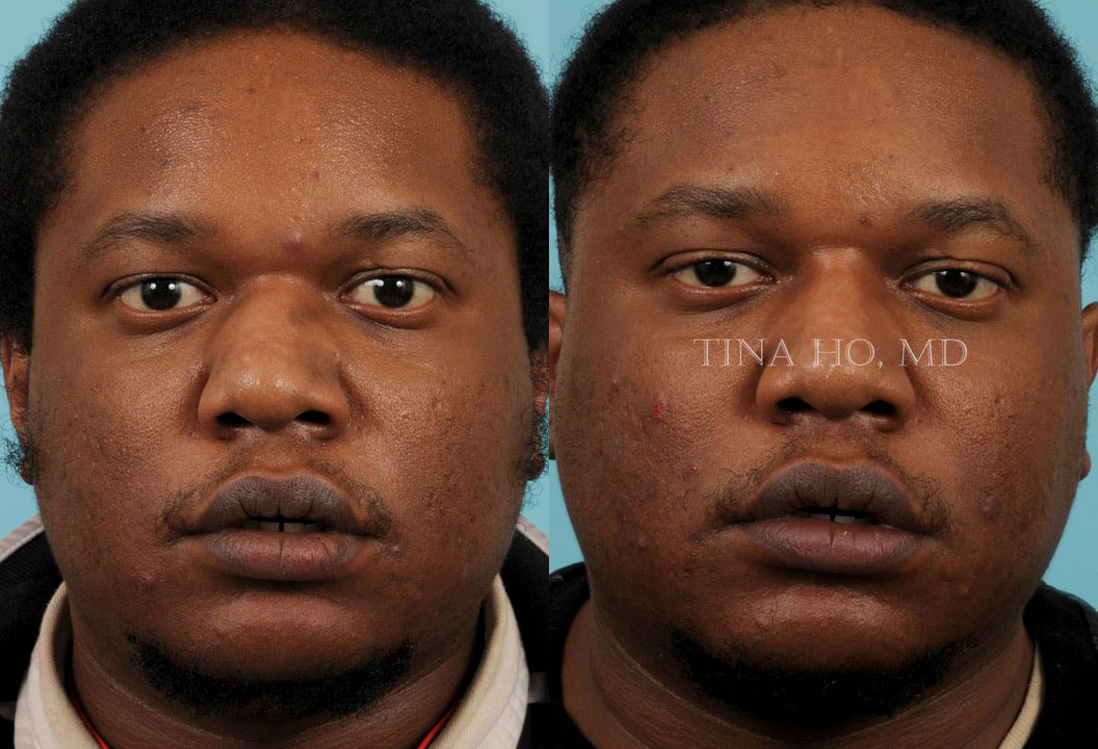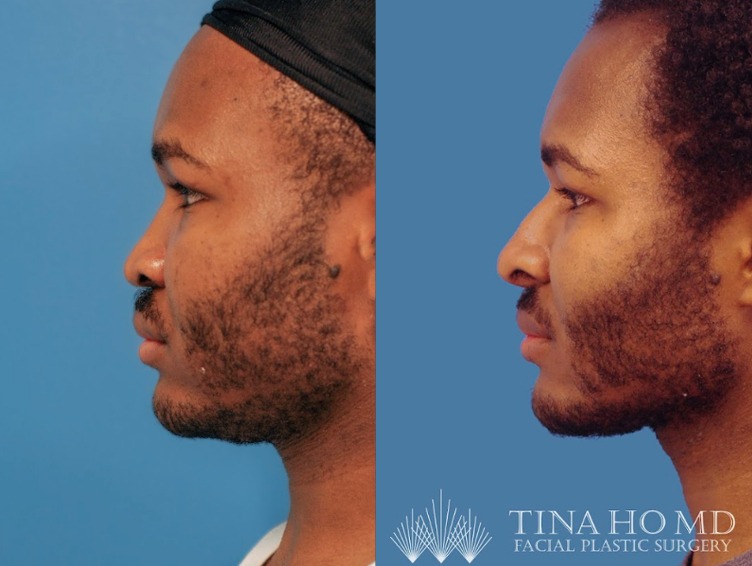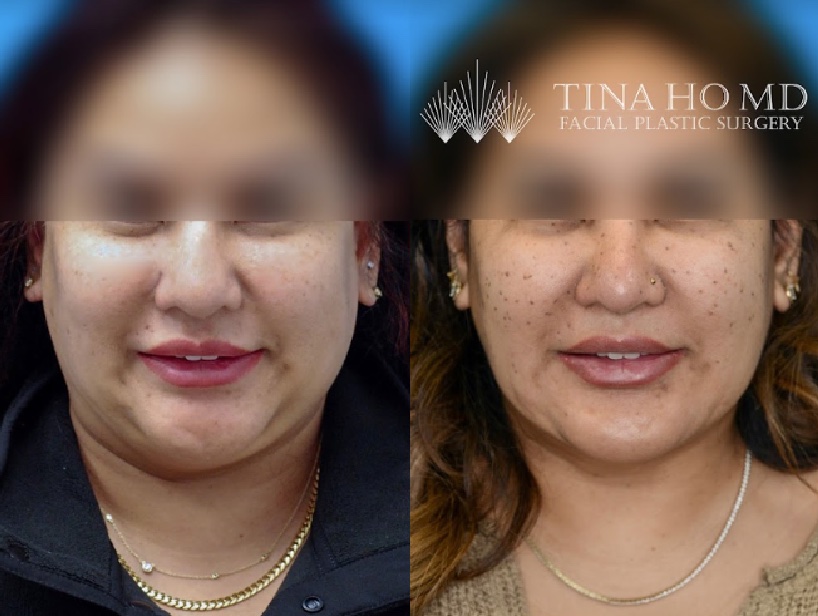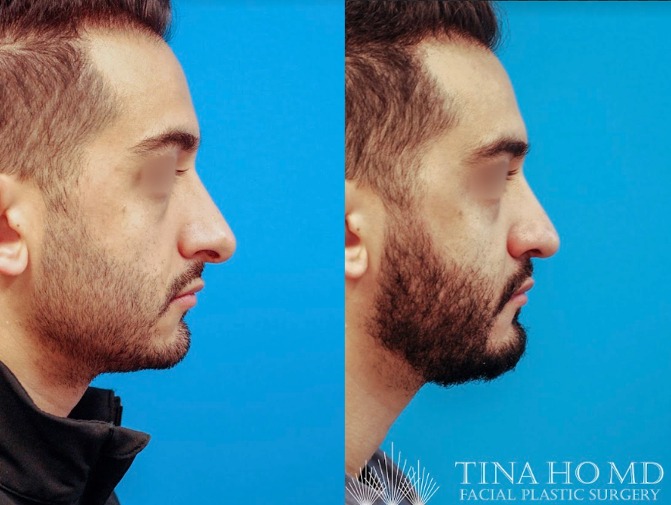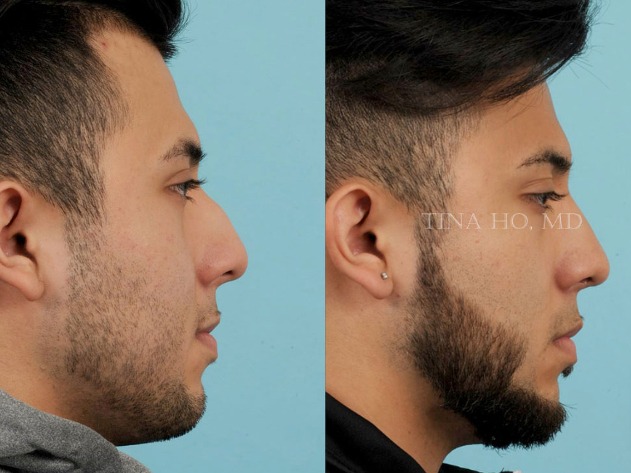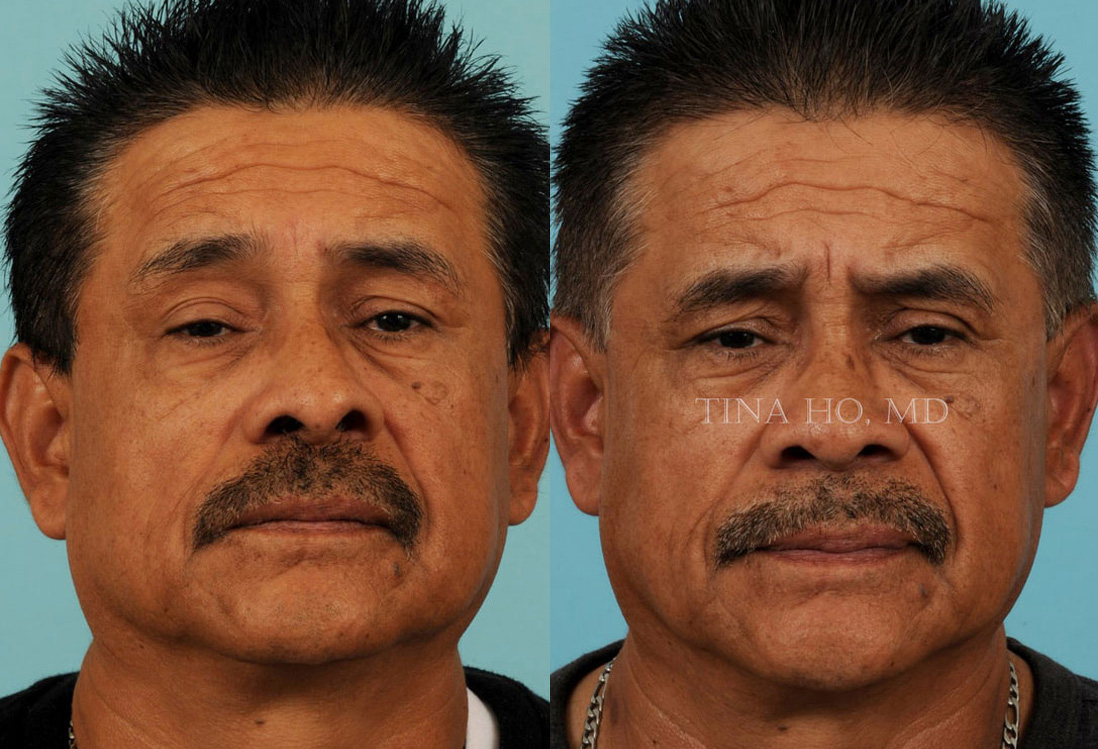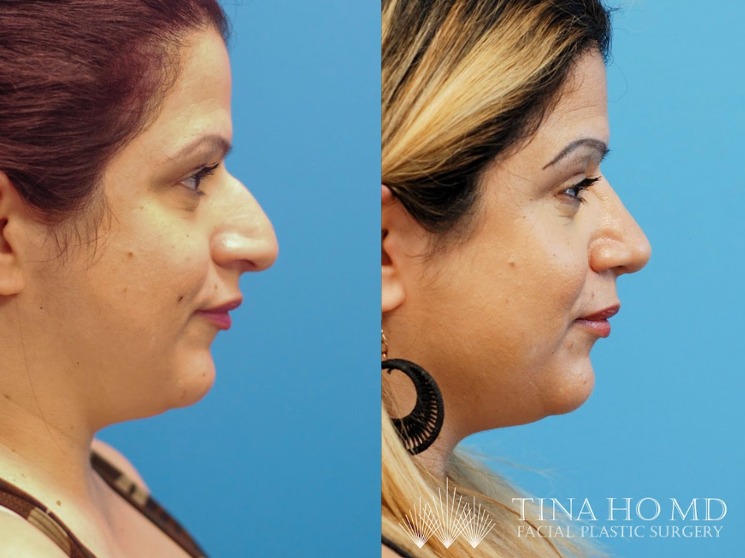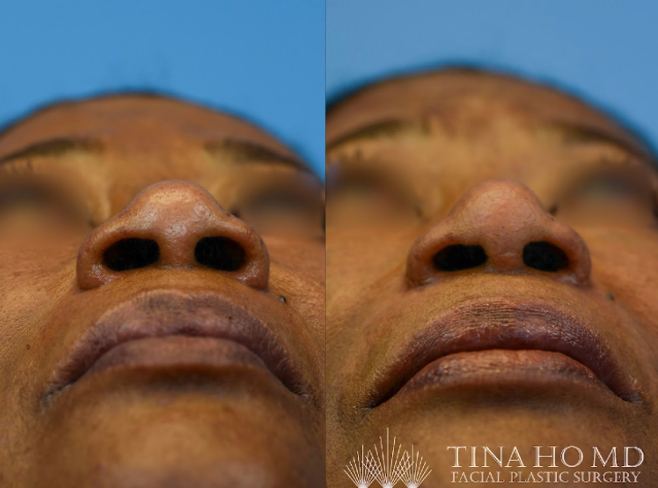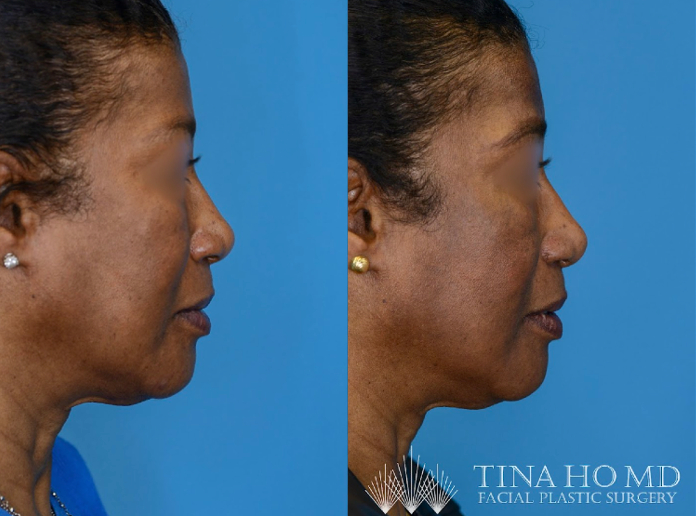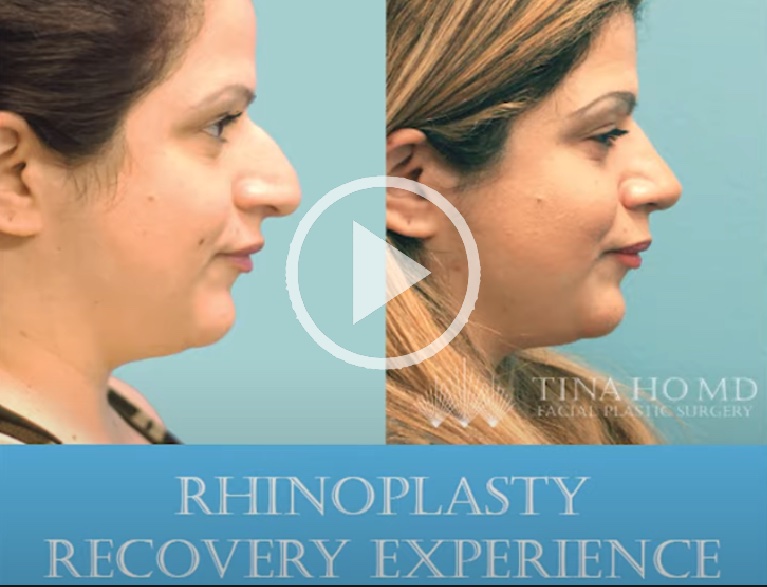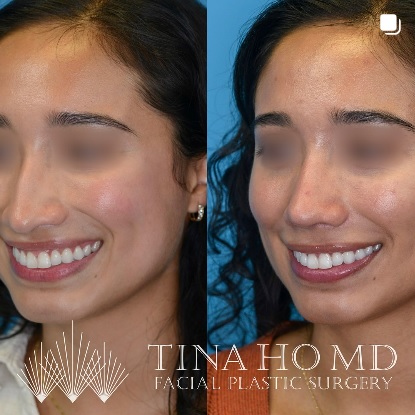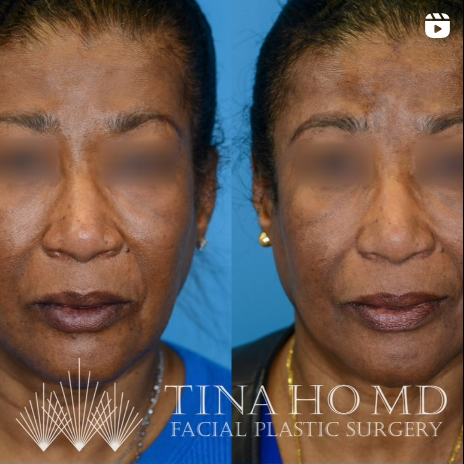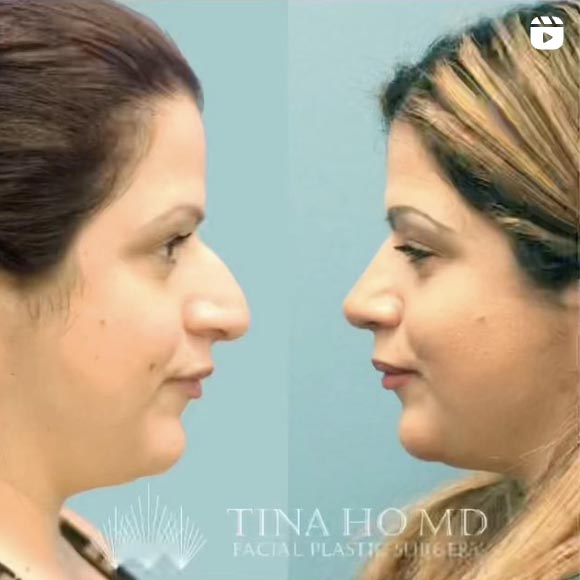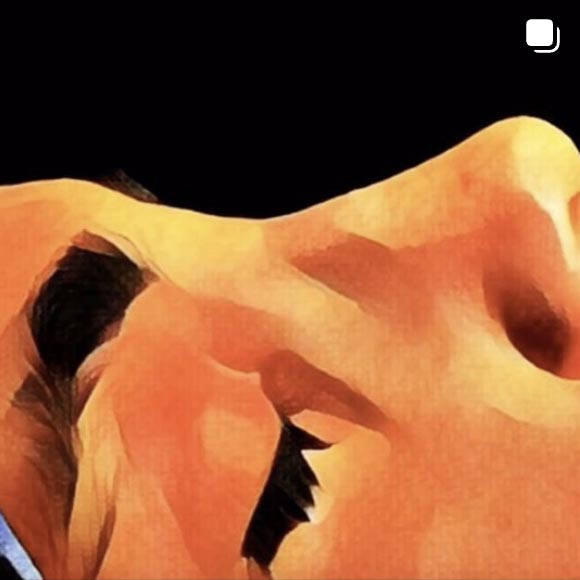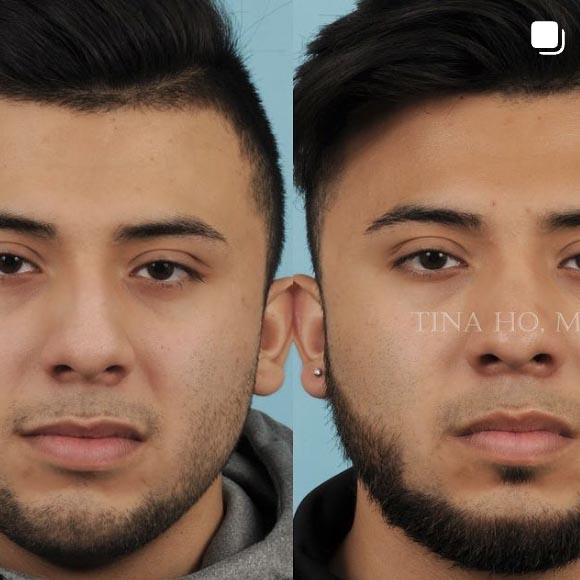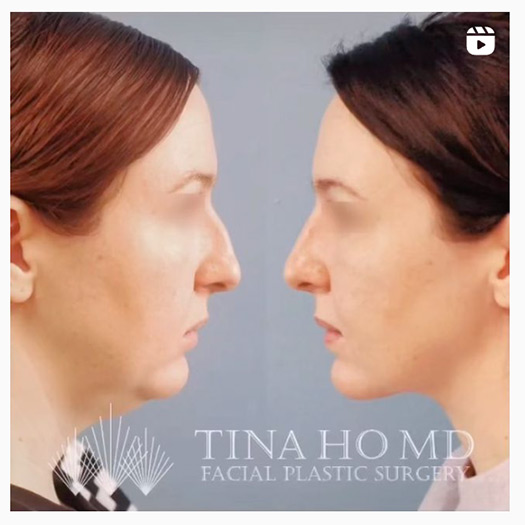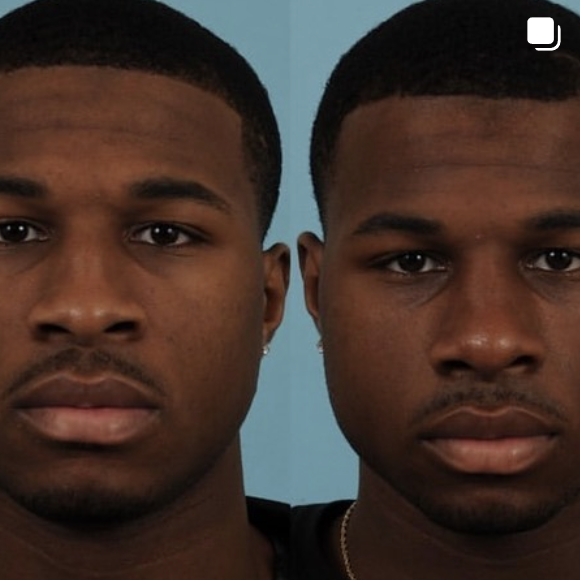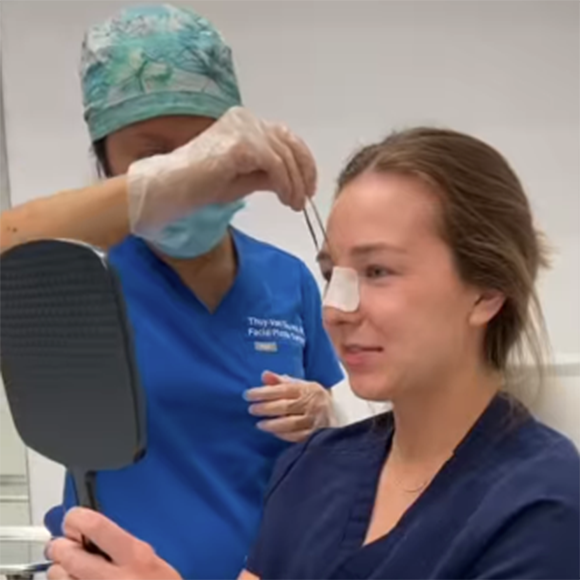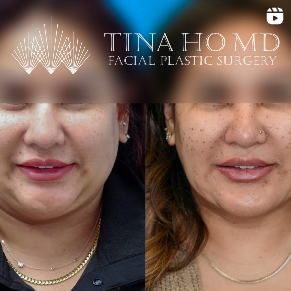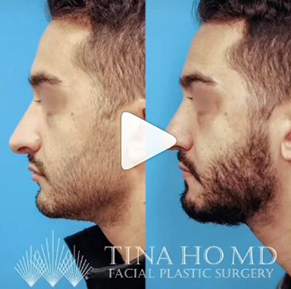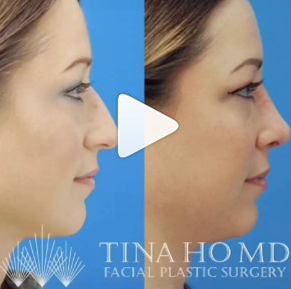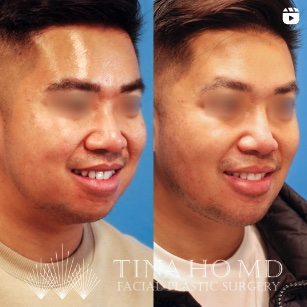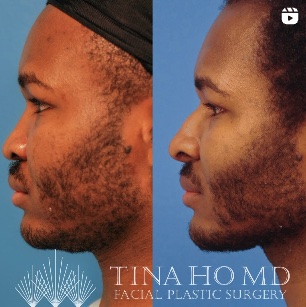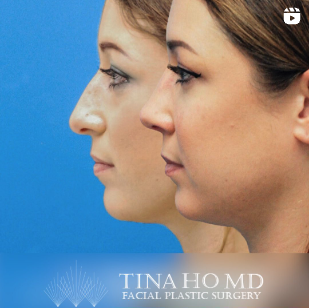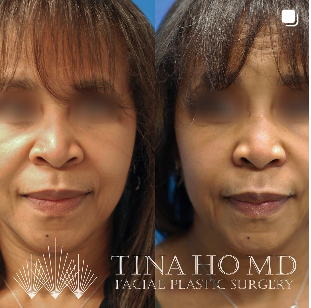Table of Contents
Book Now


Before & After
View Gallery
What Is Ethnic Rhinoplasty?
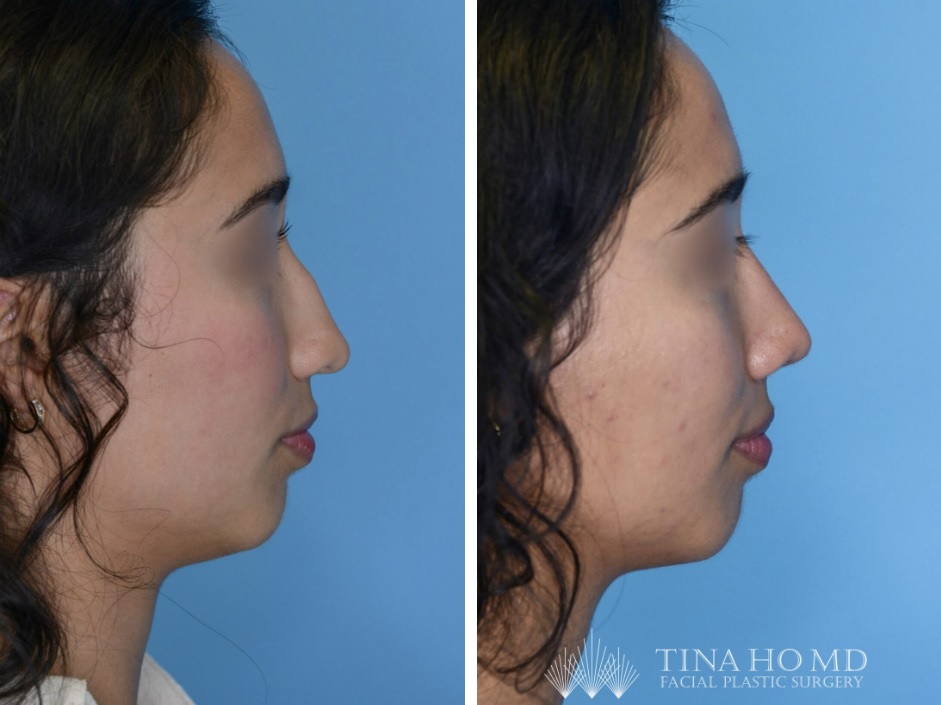
Ethnic Rhinoplasty
What is Dr. Ho’s Approach to Ethnic Rhinoplasty?
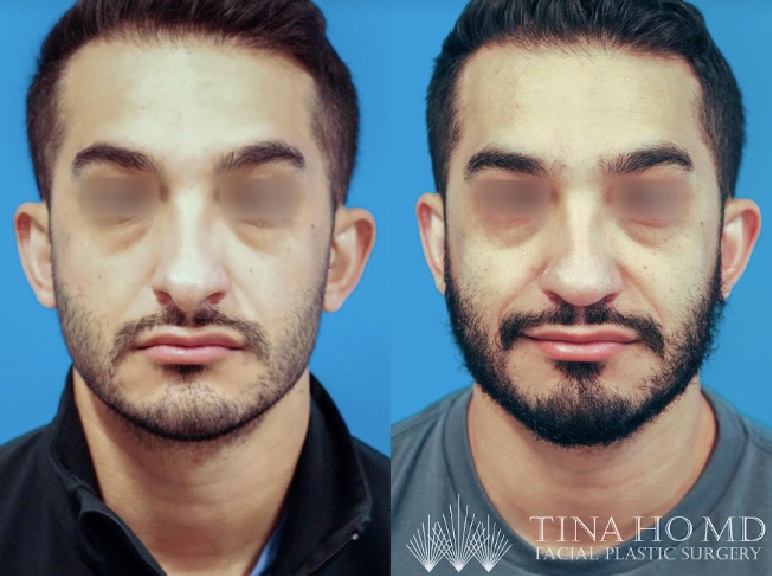
Educational Videos
Am I an Ideal Candidate?
If you are of non-Caucasian descent, you might be a good candidate for ethnic rhinoplasty. You can undergo this type of nasal surgery if you want to reduce the appearance of bumps or ridges on your nose. Your nose must be fully developed to undergo this procedure, and you must be in good overall health.
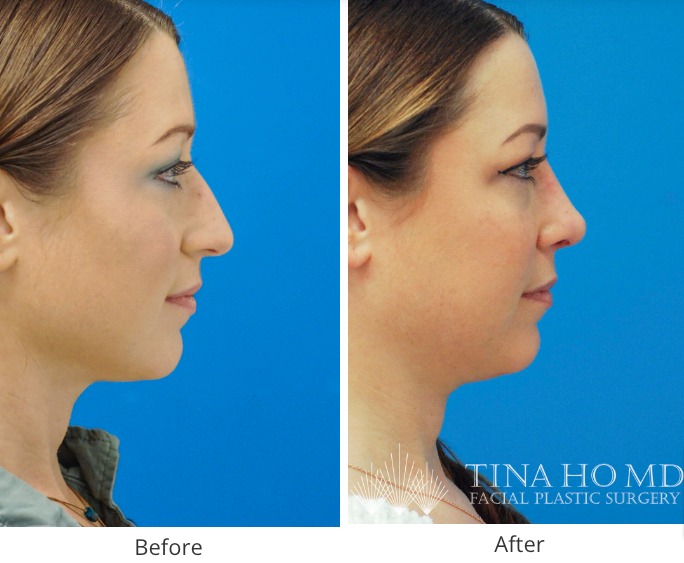
What are common nasal issues that can be addressed with ethnic rhinoplasty?
Common nasal issues that can be improved or corrected with ethnic rhinoplasty include but are not limited to:
- Crooked nose
- Large nose
- Nasal bridge hump (Dorsal hump)
- Flat nasal bridge
- Bulbous tip
- Underprojected tip
- Overprojected tip
- Drooping nasal tip
- Wide or flared nostrils
- Ill-defined nose
Your Consultation
Your consultation for ethnic rhinoplasty will include a physical examination of your nose. Dr. Tina Ho will also discuss your medical history, including any underlying conditions that may affect healing and any medications that may need to be adjusted or discontinued. You should also inform Dr. Ho about your goals and expectations.
The Ethnic Rhinoplasty Procedure
An ethnic rhinoplasty surgery is carried out similarly to traditional rhinoplasty. However, it focuses more on reshaping the nose while preserving the aspects of it that relate to the patient’s cultural and ethnic features.
Anesthesia will be administered before incisions are made. The techniques used will largely depend on the desired results and ethnicity of the patient. Specialized techniques are used to carry out the surgery. Finally, incisions are closed with sutures.
BEFORE & AFTER PHOTOS
Recovery Period
After your ethnic rhinoplasty procedure, you may need several weeks of recovery time depending on the complexity of your surgery. Expect swelling and bruising for the first few weeks. If you feel any pain, you can take medications as directed to alleviate the discomfort.
It may take up to 2 weeks to get back to normal activities, including strenuous activities.
How much does ethnic rhinoplasty cost?
Since it is a personalized procedure, the cost of ethnic rhinoplasty varies from patient to patient. The overall price will include the anesthetic administered, techniques used, and extent of work performed.
What is Dr. Ho’s Approach to Rhinoplasty in Asian and Black Patients?
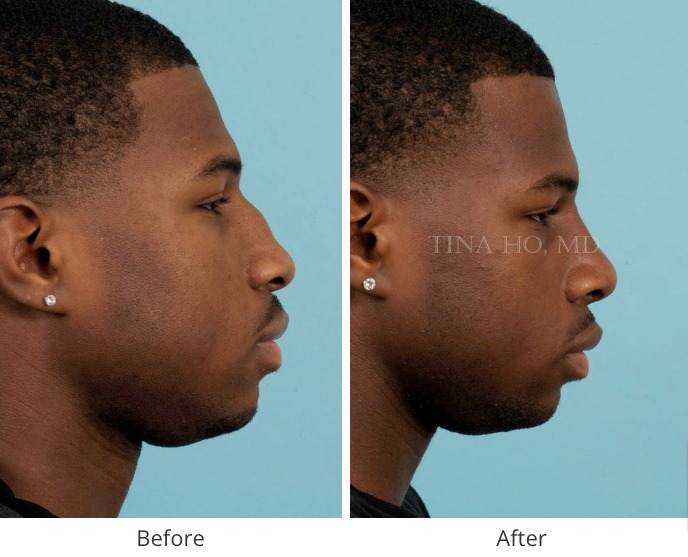
Although Dr. Ho recognizes every rhinoplasty patient is unique based on their individual nasal anatomy and surgical goals, she has a global understanding of the commonalities shared by patients of certain ethnicities and applies this knowledge to her surgical approach. Many patients of Asian and African descent often desire ethnic rhinoplasty to improve any of the following issues: flat nasal bridge, underprojected tip, bulbous tip, and wide or flared nostrils. Furthermore, Asian and black rhinoplasty patients commonly possess thick nasal skin, which limits the extent of tip refinement that can be achieved and makes them prone to experiencing more prolonged nasal swelling in the recovery period, and are at higher risk of poor scarring including hypertrophic or hyperpigmented scars. Dr. Ho understands well the nuanced challenges to rhinoplasty in Asian and black patients and customizes her surgical technique accordingly including harvesting ear or rib cartilage for needed augmentation and carefully concealing her incisions to achieve the best results for each ethnic rhinoplasty patient.
What is Dorsal Augmentation?
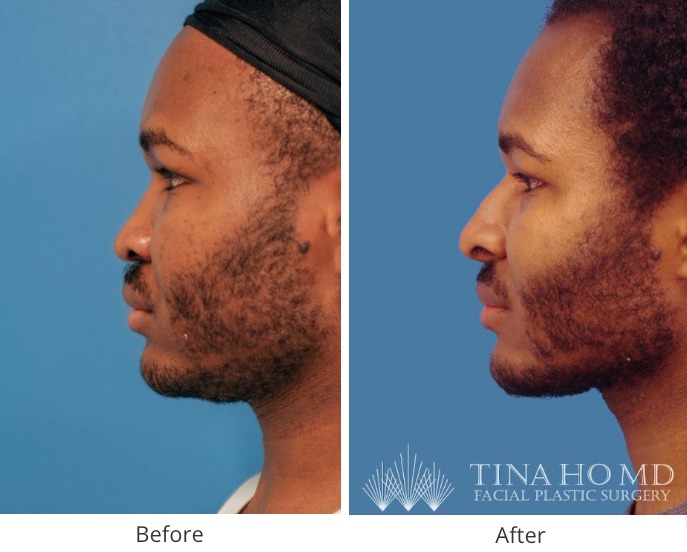
Dorsal augmentation is one procedure within rhinoplasty that entails increasing the height of the nasal bridge (the dorsum). This can be achieved with native patient cartilage or an implant. Dorsal augmentation is commonly pursued by ethnic rhinoplasty candidates who feel they have a flat or wide nasal bridge, including those patients of Asian and African descent. Depending on how much augmentation is needed, Dr. Tina Ho utilizes septal or rib cartilage graft to create a dorsal onlay graft that is fit over the nasal bridge and underneath the skin.
What is Alar Base Reduction?
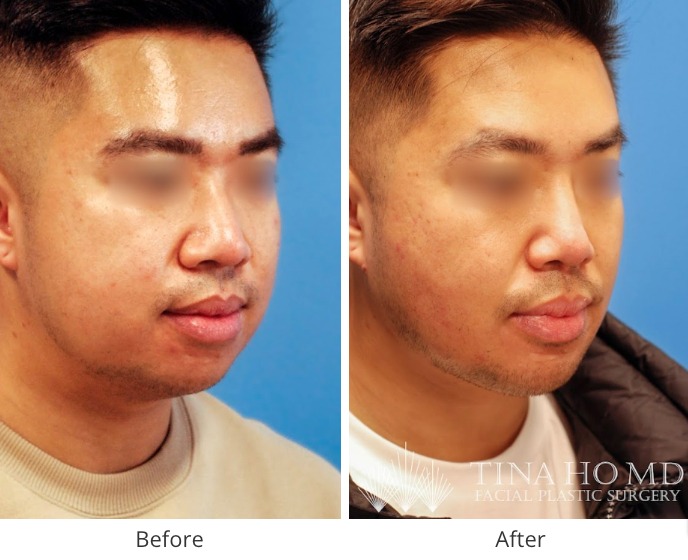
Testimonials
Patient Testimonial Videos
Learn More During a Consultation
Book Now
Related Procedures
FAQ’s
What type of doctor is best for ethnic rhinoplasty?
If you are looking into an ethnic rhinoplasty surgery, it is imperative that you work with a plastic surgeon that understands the intricacies of different facial features. This is true when it comes to the unique features between different ethnicities, as the surgery can require a customized approach to deliver the best results.
You want your surgeon to have a full understanding of why it is important to deliver the results you are looking for without taking away unique ethnic features. This means you will need to work with a surgeon with a substantial track record of working with different ethnicities, as before and after photos will be crucial here.
They should be board-certified and have direct hands-on experience with ethnic rhinoplasty. Reviewing their portfolio will offer peace of mind, and they should offer professional insight on the best route to take for your desired results. By reviewing their training, expertise, and skills and then following up with a consultation, you will set yourself on the right track for your ethnic rhinoplasty procedure.
How is ethnic rhinoplasty different?
Ethnic rhinoplasty takes a specialized approach to the techniques used, as it focuses on maintaining the unique anatomy of the patient’s ethnic features. Traditional rhinoplasty techniques focus on making minor to significant modifications to the nose, inside and out. With ethnic rhinoplasty, enhancements are made to the overall appearance of the nose without compromising the natural look of individual ethnic features.
Even after reviewing before and after photos, it is important to keep in mind that the right surgeon will take a unique approach with every patient. Human features vary with every individual, so they will work closely with you during the consultation to determine the best path for your particular surgery. You will also go over details regarding ethnic rhinoplasty costs and payment options.
It is a process that is very plausible, but only if you choose a plastic surgeon that has the proper experience with ethnic rhinoplasty. You can definitely get a more aesthetically pleasing experience from ethnic rhinoplasty without giving up the features that are unique to you.
An ethnic nose job can span from minor to much more significant adjustments, and it is important to properly convey the look you are going for during the consultation. Of course, your surgeon will also provide a decent amount of professional insight on how they think the operation should go. It’s a collaborative effort that works best to achieve the results you’re hoping for.
How long does ethnic rhinoplasty last?
Many people enjoy the results of ethnic rhinoplasty for years to come; the results are typically permanent. A lot of this comes down to the details of the surgery itself and how your body changes over time as you age. The results of your surgery can also be affected by various lifestyle choices, such as sun exposure, changes in weight, and even environmental stress.
Aside from that, the longevity of ethnic rhinoplasty results is a big selling point for most people. It is an investment that could last a lifetime, and with the right surgeon, you are guaranteed to see the benefits of top-notch results. You should follow your surgeon’s post-op care instructions without fail, as the healing process is crucial to the final results.
By working with a plastic surgeon that understands the precision and detail that ethnic rhinoplasty requires, you can rest easy knowing your results will last for a very long time. In many cases, patients have an idea of what they would like to change about their nose, but the surgeon will help refine that vision and make it a reality. Their expertise will ensure your ethnic features shine through after the adjustments have been made.
What is African American rhinoplasty?
Simply put, African American rhinoplasty centers itself around the ethnic features of African American patients. Each patient requires a customized approach to their surgery. Your surgeon Dr. Tina Ho will cater her surgical approach to your individual anatomy and goal to ensure you get the results you want and maintain your ethnic features.
This type of rhinoplasty can involve various types of changes to the nose including enhancing the bridge of the nose, refining the nasal tip, making the nasal tip appear smaller, and reducing the width and flare of the nostrils. Most African American patients have thick nasal skin so it is important to keep in mind that the results may not be as drastic compared to patients with thinner nasal skin.
What can I expect with my recovery from an African American rhinoplasty?
Although the recovery process can be different for each patient, African American rhinoplasty goes through a similar recovery to traditional rhinoplasty. You will want to schedule a few days to a week off after surgery, as the initial healing phase is the most important. Swelling and bruising are also quite common around the nose and eyes, but many people can manage this with the help of icing and pain medication.
It is important to avoid strenuous activities for two weeks, and simple actions such as bending over or blowing your nose can worsen the swelling. For your face to fully heal and display the final results, the process could take months to years. Post-operative healing can be a slow burn for some people, but the results are entirely worth the wait.
Your surgeon Dr. Tina Ho will offer specific care instructions based on the work that was done. Some of which may include keeping your head elevated while you sleep and avoiding specific irritants that could affect the healing process. Some patients go through more significant adjustments than others, and this can come with varying requirements to see a full recovery. If you have any specific questions about your procedure, do not hesitate to consult with your surgeon as your nose and face heal over time.
Is Asian rhinoplasty different?
Asian rhinoplasty involves a specialized approach to rhinoplasty and requires a surgeon that has the expertise to work with these particular ethnic features. Each patient has their own vision and requests for the intended results. When it comes to Asian rhinoplasty, many patients would like to make adjustments to the nasal tip and bridge, as well as reductions in the nasal base.
As with any rhinoplasty procedure, Asian rhinoplasty aims to deliver a more aesthetic look while maintaining the unique ethnic features. Depending on their anatomy and desired results, some patients may require more or less work during surgery.
By working with a surgeon that has previous experience in Asian rhinoplasty, you can feel confident about the end results of your operation. Where traditional rhinoplasty focuses on a more Westernized look, Asian rhinoplasty makes enhancements without compromising the unique cultural features. To ensure you get the best results possible, it is paramount that you have a thorough discussion with your surgeon during the consultation.
Do not hold back on your expectations, but in the same vein, remember to maintain a realistic viewpoint. Your operation will take a lot of skill, and your surgeon will know exactly how to approach your unique needs. Always be sure to review before and after photos to get a look at their work before committing to a surgeon.
Will I still look like others of my ethnic group?
That is the intention of ethnic rhinoplasty, as it offers a skillful blend of adjustments to the nose while maintaining your ethnic identity. This is why it is crucial to work with a surgeon that understands the anatomy of your ethnicity. In the event you choose a surgeon who does not have this experience, they may be more likely to take a Westernized approach to your procedure and not deliver the surgical results you are hoping for.
You are looking for a surgeon who has direct experience with patients from the same or similar ethnicity. Not only will you be able to evaluate their previous work, but it will also give you peace of mind about the end results. It is always important to remember that a plastic surgeon should take a customized approach to every ethnic rhinoplasty procedure.
Although many people share similar features within the same culture, each individual’s anatomy is vastly different from the next. Working with a surgeon you can rely on will give you the confidence needed to move forward. This will also guarantee that your recovery process goes well and that you are provided with the right information and guidance to ensure the best outcome.
Ethnic rhinoplasty is not a procedure where you want to cut corners. Do not settle for less when choosing your surgeon, and always make sure they have a history of working with patients from the same ethnicity.
from The American Academy Of Facial Plastic And Reconstructive Surgery.

